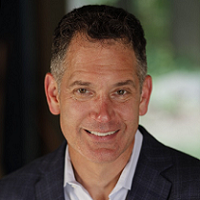 By Rich Keller, CEO, PurposeCare
By Rich Keller, CEO, PurposeCare
LinkedIn: Richard Keller
LinkedIn: PurposeCare
As the global population ages, the preference to remain in one’s own home rather than transition to institutional care (aging in place) has become increasingly prevalent.
Most older Americans want to stay at home as they age; and increasingly, they are. In 2021, AARP found that over 75% of adults over 50 preferred to age in place. Over the past two decades, the number of older adults living in traditional housing has climbed, while nursing home residency has steadily declined.
By 2020, just 1.2 million adults over 65 (2.15%) lived in nursing homes nationwide, compared with 1.5 million (4.5%) in 2010. As institutional care use falls, the burden of support has shifted to families. An estimated 53 million Americans (roughly one in five adults) now serve as informal caregivers, often at significant cost to their own health, finances, and emotional well-being.
However, fewer older adults today live with extended family, and many live more than an hour away from the relatives who might otherwise step in to help. For some, proximity to adult children still offers critical support. But for millions, that option simply doesn’t exist. Roughly 15 million older Americans have no children at all, and nearly one in four adults will face old age alone.
Stopping a Crisis Before it Starts
At the same time, research shows that at least half of people over 65 will eventually require some form of care, as over 85% of those over 65 live with at least one chronic condition, while approximately 3.4% of those over 65 and 20% of those aged 85 require help with at least one activity of daily living (ADL). Without consistent monitoring, minor health issues such as a urinary tract infection or a fall, can quickly spiral into emergency room visits or hospitalizations.
Home care provides a comfortable alternative to a nursing home, where individuals can be assisted with ADLs, while home health provides medical care in the home for episodic concerns as an alternative to acute hospital care.
The true power of home health lies in prevention. Trained clinicians and caregivers operating inside the home can catch early warning signs that are often invisible during a rushed doctor’s appointment or after a hospital discharge.
Real-time changes in mobility, appetite, cognitive function, or mood are critical indicators of worsening health. Acting on these subtle shifts early can mean the difference between a medication adjustment and a trip to the emergency room.
Expanding home-based primary care for high-risk patients has been shown to reduce hospitalizations by 38% and emergency department visits by 31%. These statistics represent thousands of older adults spared the trauma, expense, and decline that so often follows a hospitalization. Home Care providers can be the eyes and ears for primary care further assisting in their collective ability to improve health outcomes.
Technology That Sees What Humans Can Miss
Today’s best home care providers are not operating on observation alone. They are powered by predictive technology capable of integrating information from a variety of sources, including electronic health records, caregiver reports, hospital databases, and vital signs.
These platforms monitor changes around the clock, triggering real-time alerts when a patient’s condition deteriorates. They stratify risk, automate clinical workflows, and flag emerging trends before they become crises.
Predictive analytics and machine learning sharpen this further, combing through structured and unstructured data, like caregiver notes, to detect patterns invisible to the human eye. They forecast adverse events like hospital admissions, infections, or falls, giving clinical teams a critical head start.
Real Results in Real Time
Dorothy is an 82-year-old woman living with congestive heart failure. Her caregivers noticed a small but troubling pattern, such as slight weight gain and reduced activity levels. However, they worked with newer homecare tech that enabled further management. The system flagged these signs immediately. Within a day, her care team intervened, adjusting her medications and arranging a home visit. Consequently, hospitalization was avoided, the patient’s condition stabilized, and her dignity preserved.
Cases like this are not isolated. They are the new standard for what home health should deliver.
Aging at Home Is a Strategy
Beyond the medical benefits, home health protects something that is harder to quantify but equally vital: independence. Aging at home preserves emotional well-being, strengthens family ties, and offers familiarity and comfort that no institution can replicate.
It also makes financial sense. Home care can save between $25,000 and $65,000 per patient compared to nursing home care; a pertinent consideration as the U.S. healthcare system faces unprecedented pressure from a rapidly aging population.
The Human Connection Still Matters Most
Technology can predict. Data can flag. But without human hands to act, outcomes don’t change. Effective home care relies on seamless teamwork, like structured handoffs between caregivers and clinicians, standardized procedures for when conditions change, and regular interdisciplinary reviews of each patient’s status. It demands vigilance, compassion, and precision at every layer.
Because in the end, no algorithm can replace the trained caregiver who notices a worried look, a limp, or a skipped meal, and knows exactly what to do next.
Looking at The Road Ahead
The U.S population increased by nearly 40% in the decade between 2010 and 2020. By 2030, more than 80 million Americans will be over the age of 65. Meeting their needs will require a health delivery system that meets Americans where they are – in the home.
